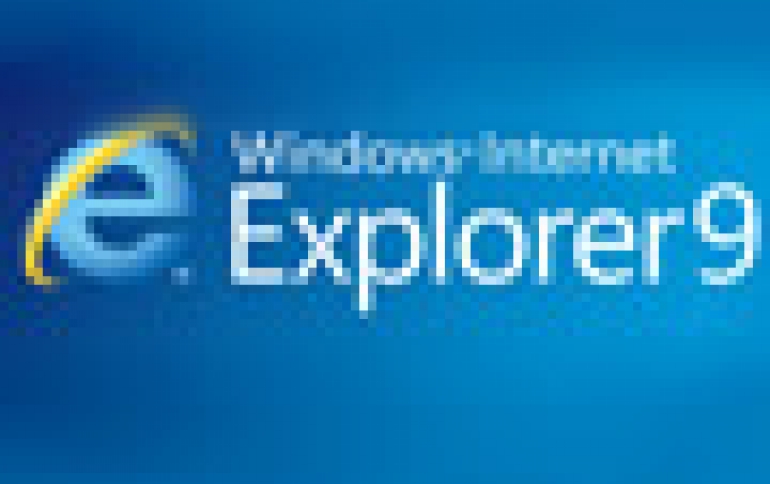
Microsoft Defends Slow Adoption of IE9
With Internet Explorer 9, Firefox 4.0, and Chrome 10 all hitting their final releases recently, drawing instant comparisons around downloads or initial usage is a natural temptation, but it can't be done yet, Microsoft claims.
Firefox 4 for desktop launched on March 23rd and according to Mozilla, just within 24 hours of being announced, it had been downloaded 7.1 million times - more than double those Microsoft had reported for its Internet Explorer 9 browser.
Microsoft's mechanism for updating IE9 is actually based on the Windows Update. In the case of Firefox 4.0 and Chrome 10, their update mechanisms are turned on as part of their initial release to web (RTW). Microsoft claims that although the IE9 was RTW-ed on March 14th, it just turned on Windows Update for IE9 RTW March 28th? even then only for existing IE9 Beta and RC users.
"We have yet to turn on any updating for any Windows customers who have not previously downloaded the IE9 Beta or IE9 RC. So, every IE9 download is from a customer actively seeking out Internet Explorer 9 and downloading it. No automatic update or in-product prompts. As a matter of fact, of the downloads we?ve seen through Sunday, March 27th, over 90% have come from non-IE9 RC and Beta users. And remember, we report completed downloads - not attempted downloads where a user may hit a download button repeatedly but without fully downloading IE9," said Ryan Gavin, Senior Director, Internet Explorer Business and Marketing.
Internet Explorer 9 will not be broadly rolled out on Windows Update until the end of June, Gavin added, since Microsoft has thousands business customers that rely on Internet Explorer and require an appropriate window of time to plan and test their deployments.
Microsoft's executive added that any comparison of browser share adoption at this point "is premature at best, and misleading at worst."
Microsoft is focusing on IE9 on Windows 7 OS. "When you look at adoption of browsers it's easy to report the top-line result across all operating systems, but it's a narrow view of what's actually happening. Adoption on Windows 7 is what we care about most. That is the experience that we built for developers, designers, consumers and enterprises around the world. That is the experience that will push the web forward. Other browsers support other platforms, so if you want to draw comparisons you really need to take account of addressable base. With IE9, you essentially need to multiple by a factor of almost 3x to account for the difference in current addressable base," Gavin added.
Microsoft's mechanism for updating IE9 is actually based on the Windows Update. In the case of Firefox 4.0 and Chrome 10, their update mechanisms are turned on as part of their initial release to web (RTW). Microsoft claims that although the IE9 was RTW-ed on March 14th, it just turned on Windows Update for IE9 RTW March 28th? even then only for existing IE9 Beta and RC users.
"We have yet to turn on any updating for any Windows customers who have not previously downloaded the IE9 Beta or IE9 RC. So, every IE9 download is from a customer actively seeking out Internet Explorer 9 and downloading it. No automatic update or in-product prompts. As a matter of fact, of the downloads we?ve seen through Sunday, March 27th, over 90% have come from non-IE9 RC and Beta users. And remember, we report completed downloads - not attempted downloads where a user may hit a download button repeatedly but without fully downloading IE9," said Ryan Gavin, Senior Director, Internet Explorer Business and Marketing.
Internet Explorer 9 will not be broadly rolled out on Windows Update until the end of June, Gavin added, since Microsoft has thousands business customers that rely on Internet Explorer and require an appropriate window of time to plan and test their deployments.
Microsoft's executive added that any comparison of browser share adoption at this point "is premature at best, and misleading at worst."
Microsoft is focusing on IE9 on Windows 7 OS. "When you look at adoption of browsers it's easy to report the top-line result across all operating systems, but it's a narrow view of what's actually happening. Adoption on Windows 7 is what we care about most. That is the experience that we built for developers, designers, consumers and enterprises around the world. That is the experience that will push the web forward. Other browsers support other platforms, so if you want to draw comparisons you really need to take account of addressable base. With IE9, you essentially need to multiple by a factor of almost 3x to account for the difference in current addressable base," Gavin added.





















